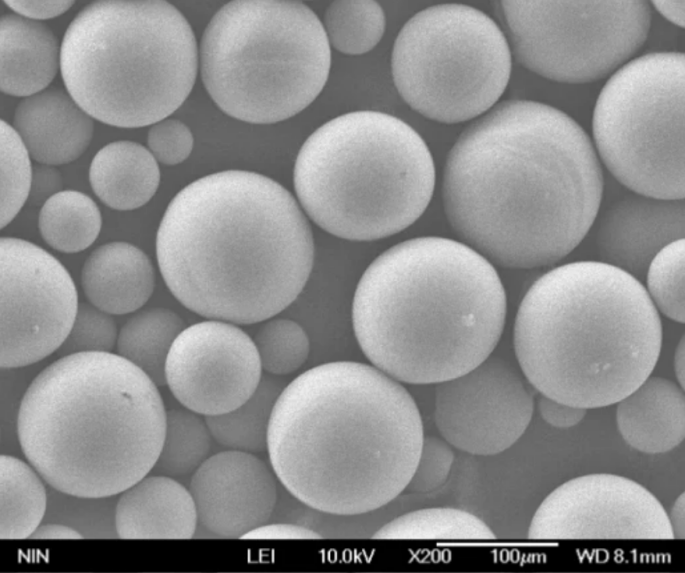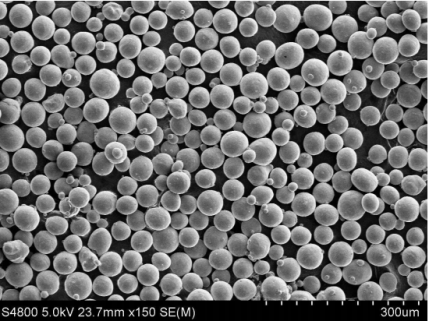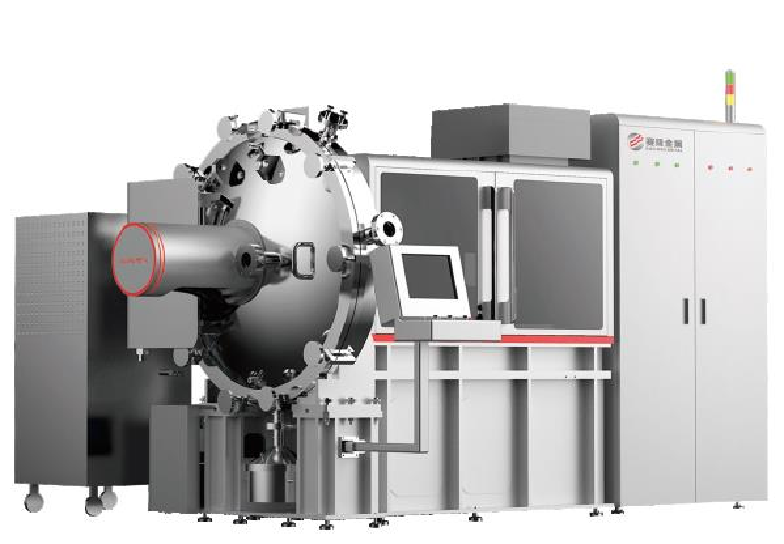1. Introduction
In the world of manufacturing, technological advancements continue to revolutionize the way products are made. One such innovation is Electron Beam Melting (EBM) manufacturing, which offers numerous benefits over traditional manufacturing methods. This article explores the concept of EBM manufacturing, its advantages, the manufacturing process involved, its applications across various industries, challenges faced, and future developments in this field.
2. What is EBM Manufacturing?
EBM manufacturing is an additive manufacturing process that utilizes an electron beam to selectively melt metal powder particles, layer by layer, to create three-dimensional objects. This process is also commonly known as electron beam melting or electron beam additive manufacturing. EBM manufacturing falls under the broader category of metal additive manufacturing, which includes other techniques like selective laser melting (SLM) and direct metal laser sintering (DMLS).

3. The Advantages of EBM Manufacturing
3.1 High Precision
EBM manufacturing offers exceptional precision, allowing for the creation of intricate and complex geometries. The electron beam selectively melts the metal powder, ensuring precise deposition of material, resulting in high-resolution and accurate components.
3.2 Design Freedom
Unlike traditional manufacturing methods that often have limitations on design complexity, EBM manufacturing provides designers with greater freedom to explore innovative designs. Complex internal structures, overhangs, and undercuts can be easily achieved, enabling the production of lightweight and optimized components.
3.3 Cost Efficiency
EBM manufacturing can be cost-effective, particularly for low-volume production and customized parts. The ability to directly manufacture functional parts without the need for tooling or complex assembly processes reduces costs associated with traditional manufacturing methods.
3.4 Material Flexibility
EBM manufacturing supports a wide range of materials, including various metals such as titanium, stainless steel, and nickel-based alloys. This flexibility allows manufacturers to choose materials that best suit the intended application, resulting in durable and high-performance components.

4. The Process of EBM Manufacturing
The EBM manufacturing process involves several key steps:
4.1 Preparing the CAD Model
The process begins with the creation of a computer-aided design (CAD) model of the desired object. The CAD model serves as a digital representation of the final product and guides the EBM machine in the manufacturing process.
4.2 Machine Setup
Once the CAD model is prepared, the EBM machine is set up accordingly. The machine is loaded with the desired metal powder, and parameters such as beam power, beam speed, and layer thickness are configured.
4.3 Melting and Solidification
During the manufacturing process, an electron beam is emitted from an electron gun and directed towards the metal powder. The intense heat generated by the beam melts the powder particles, which then solidify to form the desired shape. This layer-by-layer process continues until the complete object is formed.
4.4 Post-Processing
After the object is fabricated, it undergoes post-processing operations such as heat treatment, surface finishing, and machining if necessary. These steps are crucial for improving the mechanical properties, surface quality, and dimensional accuracy of the final product.

5. Applications of EBM Manufacturing
EBM manufacturing finds applications in various industries due to its unique advantages. Some notable applications include:
5.1 Aerospace Industry
In the aerospace sector, EBM manufacturing is used to produce lightweight and complex components, such as turbine blades, engine parts, and structural components. The ability to create intricate geometries with high precision makes it an ideal choice for aerospace manufacturers.
5.2 Medical and Dental Field
EBM manufacturing has revolutionized the medical and dental field by enabling the production of patient-specific implants, prosthetics, and surgical tools. The design freedom and biocompatibility of EBM-produced parts make them highly suitable for medical applications.
5.3 Automotive Sector
The automotive industry benefits from EBM manufacturing through the production of lightweight components that enhance fuel efficiency and vehicle performance. Complex parts like engine brackets, heat exchangers, and exhaust manifolds can be efficiently manufactured using EBM.
5.4 Tooling and Molding
EBM manufacturing also finds application in tooling and molding processes. The ability to create custom molds with complex cooling channels improves manufacturing efficiency and reduces cycle times in industries such as injection molding and die casting.

6. Challenges and Limitations of EBM Manufacturing
While EBM manufacturing offers numerous advantages, it also faces certain challenges and limitations that need to be addressed. These include:
6.1 Limited Material Options
Compared to traditional manufacturing methods, EBM manufacturing has a more limited selection of materials available. However, ongoing research and development efforts are expanding the range of materials compatible with EBM, addressing this limitation.
6.2 Size and Speed Constraints
EBM manufacturing can be relatively slow compared to other additive manufacturing techniques. The size of the build volume also imposes limitations on the size of the objects that can be produced. However, advancements in machine technology and process optimization are gradually improving speed and size capabilities.
6.3 Surface Finish and Porosity
The EBM manufacturing process can result in parts with rough surface finishes and increased porosity. While these characteristics may not be critical for some applications, they may require additional post-processing steps or surface treatments for others.
6.4 Cost of Equipment and Expertise
Investing in EBM equipment and the required expertise can be costly for manufacturers. The need for specialized knowledge and the complex nature of the technology can make the initial setup and operation expensive. However, as the technology matures and becomes more widespread, costs are expected to decrease.

7. Future Developments in EBM Manufacturing
The field of EBM manufacturing is continually evolving, and several developments are expected to shape its future. These include:
7.1 Enhanced Material Selection
Research and development efforts are focused on expanding the range of materials compatible with EBM manufacturing. This will enable manufacturers to explore new applications and unlock the full potential of the technology.
7.2 Improved Speed and Size Capabilities
Advancements in machine technology and process optimization will lead to faster build speeds and increased build volumes in EBM manufacturing. This will enhance the efficiency and scalability of the process, opening up new possibilities for large-scale production.
7.3 Enhanced Post-Processing Techniques
Efforts are being made to develop advanced post-processing techniques specifically tailored to EBM-manufactured parts. This will help improve surface finishes, reduce porosity, and enhance the overall quality of EBM-manufactured components. Finishing processes such as polishing, heat treatment, and surface coating are being optimized to achieve superior results.
7.4 Integration with Other Manufacturing Processes
EBM manufacturing is being integrated with other manufacturing processes to create hybrid manufacturing solutions. By combining EBM with traditional subtractive manufacturing or other additive manufacturing techniques, manufacturers can leverage the advantages of each method and produce complex parts with enhanced functionality.

8. Conclusion
EBM manufacturing is a cutting-edge additive manufacturing process that offers numerous advantages over traditional manufacturing methods. Its high precision, design freedom, cost efficiency, and material flexibility make it a valuable technology in various industries such as aerospace, medical, automotive, and tooling. Despite some challenges and limitations, ongoing research and development efforts are driving improvements in material options, speed, surface finish, and cost-effectiveness. The future of EBM manufacturing looks promising, with advancements on the horizon that will further enhance its capabilities and open up new possibilities for innovation.
FAQs
1. Is EBM manufacturing similar to 3D printing?
EBM manufacturing is a type of 3D printing or additive manufacturing. However, it uses an electron beam to selectively melt metal powder, whereas other 3D printing methods like FDM or SLA use different techniques and materials.
2. What materials can be used in EBM manufacturing?
EBM manufacturing supports a range of materials, including metals such as titanium, stainless steel, and nickel-based alloys. However, the material selection is more limited compared to traditional manufacturing methods.
3. Can EBM-manufactured parts be used in critical applications?
Yes, EBM-manufactured parts can be used in critical applications. The process offers high precision and material properties suitable for demanding industries such as aerospace and medical.
4. How does EBM manufacturing compare to other additive manufacturing methods?
EBM manufacturing has its own advantages and limitations compared to other additive manufacturing methods. It offers high precision and design freedom but may have slower build speeds and limited material options. The choice of method depends on the specific requirements of the application.
5. What are the future prospects of EBM manufacturing?
The future of EBM manufacturing looks promising, with ongoing developments focused on expanding material options, improving speed and size capabilities, enhancing post-processing techniques, and integrating with other manufacturing processes. These advancements will further drive the adoption and potential of EBM manufacturing in various industries.